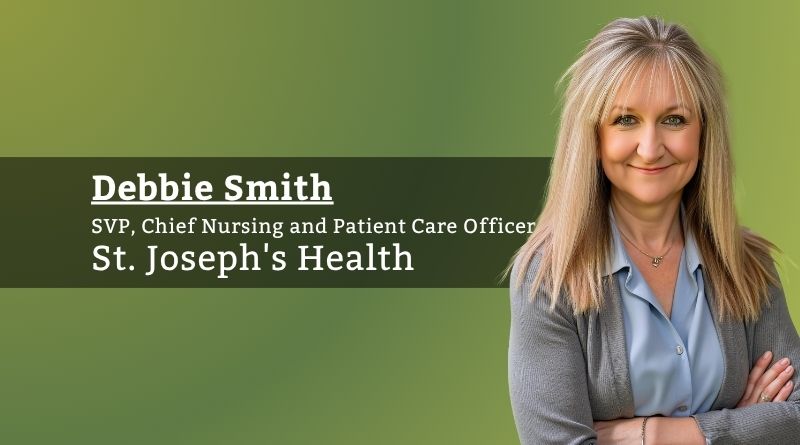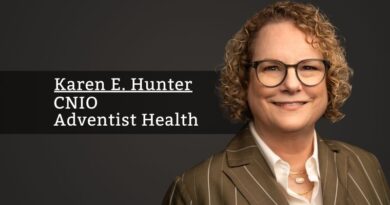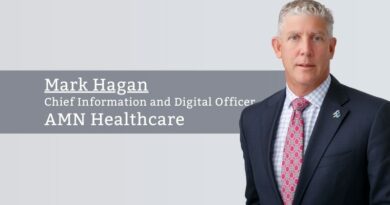Overcoming Obstacles: Tackling the Challenges of Nursing Recruitment
By Debbie Smith, SVP, Chief Nursing and Patient Care Officer, St. Joseph’s Health
As the Chief Nurse of a health system that includes a large academic teaching hospital, a community hospital, and a range of ambulatory clinics across communities of varying socioeconomic levels, I see the nursing shortage play out in different ways across different settings. While the root causes are shared by many healthcare systems, the solutions must be adapted to the needs of each environment. A single approach does not work when supporting such diverse teams and patient populations.
One challenge we continue to face is balancing competitive compensation with financial constraints. Our organization is located in a very high-cost-of-living part of the country, and our nurses may earn less than peers at neighboring institutions. This makes it more challenging to attract and retain staff, especially in specialties where demand is high across the region. At the same time, our mission-driven culture appeals to nurses who want to make a meaningful impact, particularly those who value equity, patient-centered care, and professional growth.
When nurses see that we are investing in tools and systems that improve their work experience, it sends a clear message that we are committed to making things better.
To remain competitive, we are investing in things beyond salary that matter deeply to nurses. These include strong professional development programs, access to modern technology that reduces burnout, and creating work environments where nurses can practice at the top of their license. We also support internal mobility and career progression, offering structured pathways for advancement. Whether transitioning from bedside to leadership, joining clinical education, or exploring roles in quality, informatics, or research, our nurses know they have options to grow within the organization.
Across all care settings, the demands on nurses continue to grow. High patient acuity, administrative burden, and time pressure all contribute to chronic stress. These stressors are compounded by the emotional demands of the profession and the increased expectations from regulatory bodies and the modern healthcare consumer. We are responding with targeted investments that reduce friction and make the work more sustainable. This includes automation of administrative tasks, streamlined electronic health record (EHR) systems, and secure communication platforms that improve coordination with interprofessional colleagues.
We are also implementing smart patient monitoring systems, such as fall prevention technology and predictive analytics for patient acuity, to support clinical decision-making. These tools allow nurses to intervene earlier and spend more time on meaningful patient care, rather than reacting to problems after they arise. In addition, we have established structured huddles and team-based support systems that promote communication, reduce isolation, and increase collaboration across disciplines.
More nurses today are prioritizing flexibility, and the ability to control their schedules is often a key factor in whether they choose to stay in their role. When staffing is tight, it can be challenging to offer flexible options, but we have made this a priority. We recently implemented self-service scheduling software that gives nurses more control over their shifts. This has improved job satisfaction and allowed nurse managers to build schedules more efficiently. For nurses in non-direct care roles, we have expanded remote and hybrid options, helping us retain talented professionals who might otherwise leave the workforce.
Flexibility also means recognizing the whole person behind the role. To support well-being, we have introduced wellness initiatives and peer support programs that create space for healing and connection. These efforts contribute to a healthier work culture and demonstrate our commitment to caring for our caregivers.
While we fully support nurses who pursue roles in education, leadership, informatics, and other non-clinical paths, we also recognize the need to preserve and elevate the bedside experience. Our strategy is twofold. First, we are reinforcing the value of direct care by creating environments where nurses feel respected, engaged, and supported. This includes reducing non-nursing tasks, fostering shared governance, developing frontline leaders, and ensuring physical and psychological safety. Second, we are using technology to keep our nurses updated with clinical knowledge and best practices. Our state-of-the-art simulation lab supports onboarding, skill development, and continued education. Our e-learning platforms make it easier for nurses to complete training on their own schedule without disrupting care. These tools help maintain confidence and competence throughout a nurse’s career, from novice to expert.
We are also focused on building a culture of innovation. When nurses see that we are investing in tools and systems that improve their work experience, it sends a clear message that we are committed to making things better. Our technology roadmap is informed by feedback from frontline staff, ensuring that new solutions reflect what nurses actually need to do their jobs well.
Nursing shortages are real and complex, but so are the people and systems working to address them. We are not trying to fix everything overnight. We are focused on removing barriers, listening closely to what our nurses are saying, and taking action that reflects their lived experiences. Across all care settings, inpatient, outpatient, urban, or suburban, we are building a culture where nurses feel seen, heard, and supported. Addressing these challenges requires a multifaceted approach. We must continue to develop innovative recruitment and retention strategies, stress the need for increased funding for safety net hospitals upon local, state and federal governments, and create more support structures to prevent nursing burnout.
In the end, it is not just about filling positions. It is about creating a workplace that nurses choose to stay in, and one they are proud to call home.



